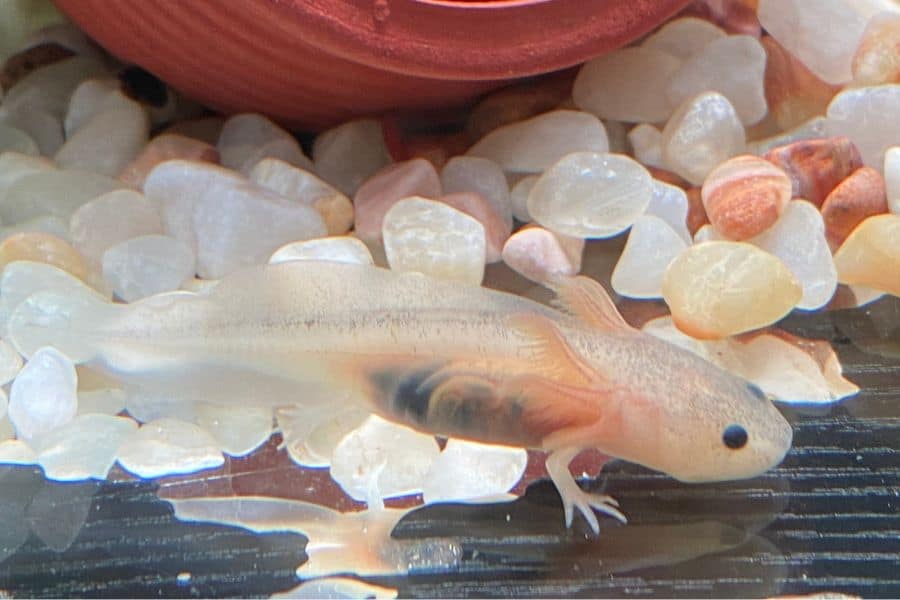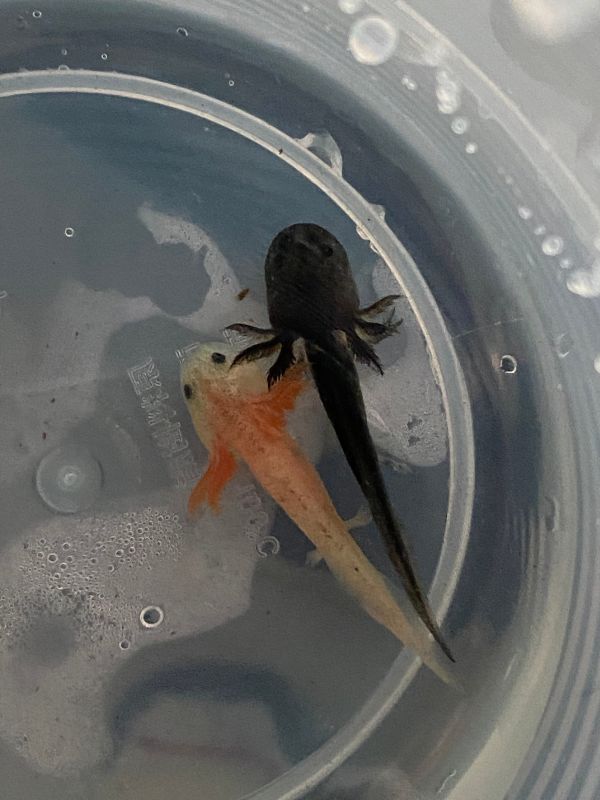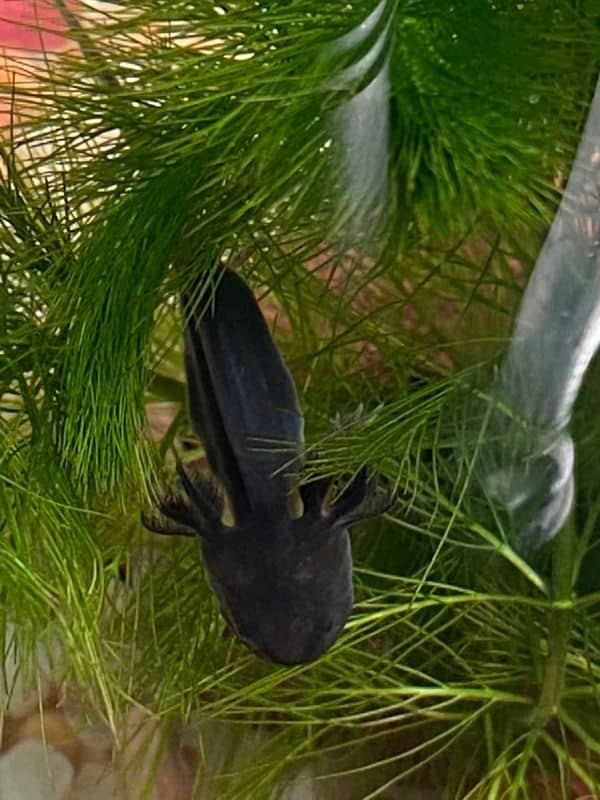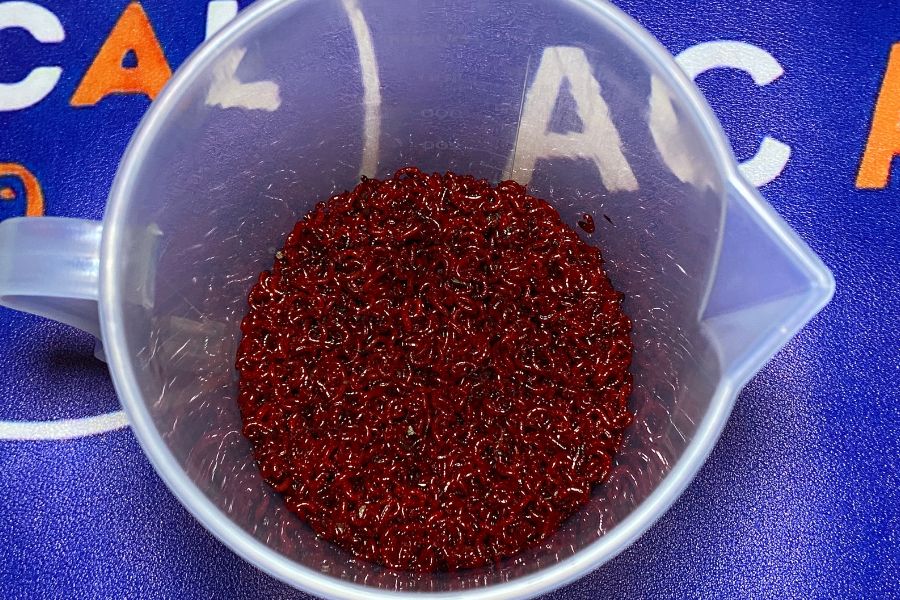Axolotls are intelligent, interesting, and adorable aquarium pets that are easy to care for. But they can be different from the creatures that many aquarists are used to, and their relative obscurity can make planning difficult.
Axolotls have specific care requirements that impact your finances. If you want to have the best experience, you’ll want to optimize your budget.
In this article, we’ll be discussing everything that has to do with the costs of keeping these beautiful creatures in your care.
How Much Do Axolotls Cost?
Like many other pets, the answer to this question depends greatly on various factors.
However, the short answer is that individual axolotls can range from $30 to $300.
The initial setup for an axolotl tank can also fall in the $100 to the $300 range, while annual recurring costs to feed your axolotls twice a week–the recommended feeding schedule for adult axolotls–fall to about $50.
Axolotl care has a lot of factors that need to be considered, which we’ll tackle below. The first thing we’ll discuss is how much individual axolotls can cost.
Pet Axolotl Price Table
Different factors affect the price of the axolotls for sale. Still, the most important is the rarity of their morph.
The price for an adult leucistic axolotl morph, the most common type, typically falls around $100 to $150. The wild type, another relatively common morph, falls between $85 and $120.
On the other hand, a rarer morph, such as the GFP, can command prices of about $150 to $300 for adults because they are more challenging to come by.
Another major factor is their life stage. An axolotl has three distinct life stages: the larvae, juvenile, and adult. Each stage will have different sunk costs and survival rates, so the younger the axolotl, the cheaper they tend to be.
We’re going to discuss those factors in detail below. But with this basic knowledge, let’s look at the price table of most axolotls on the market.
| Axolotl Morph | Life Stage | Price |
| Leucistic | Larvae | |
| Juveniles | $45 – $100 | |
| Adults | $100 – $150 | |
| Wild Type | Larvae | |
| Juveniles | $40 – $80 | |
| Adults | $85 – $120 | |
| Albino | Larvae | |
| Juveniles | $90 | |
| Adults | $110 – $215 | |
| Golden | Larvae | |
| Juveniles | $100 | |
| Adults | $160 – $200 | |
| Speckled Leucistic | Larvae | |
| Juveniles | $100 | |
| Adults | $160 – $190 | |
| Black Melanoid | Larvae | |
| Juveniles | ||
| Adults | $80 – $100 | |
| GFP | Larvae | |
| Juveniles | $120 | |
| Adults | $150 – $300 | |
| Firefly | Larvae | |
| Juveniles | ||
| Adults | $200 – $300 | |
| Axanthic | Larvae | |
| Juveniles | $150 | |
| Adults | $190 – $270 | |
| Copper | Larvae | |
| Juveniles | $130 | |
| Adults | $160 – $270 | |
| Piebald | Larvae | |
| Juveniles | ||
| Adults | $100 |
Factors That Affect Axolotl Price
Axolotls are priced based on specific factors. Understanding these factors can help you better appreciate and plan for the kind of axolotl pet you’ll get.
Let’s talk about the factors that will affect the prices of axolotls on the market.
Color Morph
One of the most important factors that can sway the price is the color morph of the axolotl.
Axolotl morphs vary from common to rare. The rarer the morph, the higher the price — but the more objectively beautiful it also tends to be.
Axolotl morphs result from selective breeding and, in some cases, genetic manipulation. Rare morphs are those that are more difficult to achieve. Since the demand is high yet the supply is low, it drives the price up for these particular morphs.
Age
The next factor that influences the price of your axolotl is how old they are, specifically what life stage they’re currently in. This is because their life stage determines specific aspects of their care.
For example, adult axolotls are easier to care for, making them better pets for beginners. Breeders and retailers have also spent more on them in terms of care expenses, like food, which also raises their overhead.
On the other hand, juveniles are cheaper because breeders have spent less on them overall. They also require more care to survive adulthood, lessening their overall demand.
Sex
The sex of your axolotl can also affect its price. Breeders put a higher price on females because of their reproductive capabilities. On the other hand, males and unsexed axolotls fetch a lower price.
Breeder
Different breeders can also charge varying prices for their products. Breeders with a better reputation can charge higher. In contrast, newer breeders often charge less to entice more customers.
Condition
The last factor is the axolotl’s individual condition. This is why it’s possible to see some individuals with the same morph and age at different prices.
Of course, healthier axolotls are more in demand. You can get an axolotl for a discounted price if you don’t mind getting one that’s not in tip-top shape, but you’ll likely have to spend more time and resources just to bring them back to total health.
How Much is An Axolotl Tank?
Now that you know how much axolotls are and what factors can affect their pricing, let’s talk about the other expenses associated with axolotl care.
In summary, you should expect to shell out at least $200 for the initial costs. This includes not just the tank but also other necessities.
Here’s a detailed breakdown.
Tank
Expense estimate: $25 – $100
Axolotls need plenty of space to thrive. They can grow up to a foot in length and stay under the water their entire lives, so they need plenty of open water as their home.
A standard 20-gallon tank with a length of at least 30 inches is typically the minimum requirement, but if you can afford a bigger setup, we definitely recommend doing that.
Remember, you don’t need a brand-new tank. If you can find a used tank that fits this specification, that’s fine, too.
Filter
Expense estimate: $100 – $200
Getting a good filtration system can be expensive, but it’s a crucial part of your axolotl tank.
While axolotls are not particularly sensitive to water parameters, they do generate plenty of waste.
This is perfectly alright when they’re living in the wild, but it can quickly build up in an aquarium with a standard filtration system.
Due to this, you’ll need a filter rated higher than your tank to keep up with your axolotls. We recommend a high-quality canister filter for the job, like Marineland Magniflow Canister Filter 30G, Fluval 207 Performance Canister Filter 45G, or Penn-Plax Cascade All-in-One Aquarium Canister Filter 100G.
If you don’t have the budget for it, you’re free to go for a cheaper, lower-rated cheaper. However, you’ll have to make up for it with more frequent water changes to ensure that ammonia doesn’t build up.
Chiller or Heater
Expense estimate: $20 – $350
Axolotls can be very sensitive to water temperature. They’re used to cooler waters between 57°F and 67°F (14°C and 19°C) and can’t tolerate warmer waters well.
This is why an aquarium chiller is a must, especially if you live in warmer climates.
There are some really cheap chillers out there, like the PetZilla Aquarium Chiller, for those who just need to reduce the temperature by a few degrees. If you like in a particularly hot climate, though, you may want to consider expensive setups like the BAOSHISHAN Aquarium Chiller.
On the other hand, if you live in colder climates, you should get a heater to keep the temperature within the ideal range.
Lighting
Expense estimate: $25 – $75
Since they don’t have any eyelids, axolotls can be quite sensitive to intense lighting. They can get very stressed under strong light, resulting in illness and disease. Plus, they don’t need lighting and are fine with ambient light from their surroundings.
If you decide to get lighting, then make sure that they’re dimmable LED lights so that you can tailor them to your pet’s individual tolerance levels.
Decor
Expense estimate: $10 – $100
While your peaceful aquatic salamanders would appreciate a bit of decoration on their tanks, they’re not really picky. You can put anything in their tank as long as there are no sharp edges that can hurt their sensitive skin.
In terms of plants, axolotls do best with wide-leafed, low-light plants like Anubias, Java fern, and Java moss. They’ll also like the shade provided by floating plants like water lettuce.
Your pets will also appreciate hiding spots like caves. You can create them with rock structures like cichlid rocks and lava rocks, as well as PVC pipes or ceramics.
Chemicals
Expense estimate: $40 – $60
‘Chemicals’ here refers to the water dechlorinators used to treat your tap water.
Like most aquatic species, axolotls also can’t tolerate chlorine. Exposure to it can give axolotls adverse effects.
Because of this, you’ll need to invest in a quality product from the get-go. Some of our favorites include Seachem Prime and API Tap Water Conditioner.
Axolotl Cost Per Month
Now that we’ve discussed the initial investment required to make an axolotl tank work, let’s talk about the recurring costs associated with an axolotl tank.
Fortunately, they don’t have a lot of repeating costs. Axolotls are pretty hardy and tolerant of most tank conditions. Plus, most specimens for sale are also captive-bred, which means they’re already used to that environment.
They’re also notorious for their robust regenerative abilities, which means they can shrug off most minor injuries.
Nevertheless, it’s only prudent to schedule a regular vet check-up to ensure they’re at the prime of their health and to detect problems before they arise.
Diet and Feeding
The main recurring expense for your axolotl tank is their food. Your pet needs a regular, high-quality carnivorous diet. This includes food like brine shrimp, worms, and blood worms.
You might think that you should go for live food, but off-the-shelf, freeze-dried food is actually recommended for beginners.
That’s because live food, like worms and insects, can introduce potentially harmful bacteria to your tank. Be very careful about using live food if you’re not sure where it’s from.
Another thing to note is that axolotls have different food needs depending on their life stages.
- Larvae stage: As baby axolotls, these critters need a lot of food and to be fed at least twice daily. They eat brine shrimp, something you can culture for cheap.
- Juvenile stage: Axolotls in this stage shift from brine shrimp to larger food, such as nightcrawlers or earthworms. However, their feeding schedule also shifts from twice a day to once a day, or sometimes once every two days, depending on their appetite.
- Adult stage: Adult axolotls eat larger but at longer intervals (at least once every two days). They also begin to enjoy hunting larger prey, so including live fare such as amano shrimp can be stimulating.
FAQs
How Much Does a Baby Axolotl Cost?
The price of a baby axolotl will vary greatly depending on their morph, but generally, they’ll tend to be cheaper than both juveniles and adult axolotls.
Is Axolotl Hard to Take Care Of?
Axolotls are relatively hardy creatures, but they do have specific care requirements. Like most creatures, if those care requirements are unmet, they’ll likely feel stressed and suffer.
Conclusion
Axolotls are great pets, but aspiring pet keepers might be thrown off by how different their care requirements are, which makes it challenging to plan for their care.
That’s why, in this article, we talked about the financial necessities of taking care of these beautiful animals. Now you have everything you need to raise a happy and healthy axolotl aquarium!



